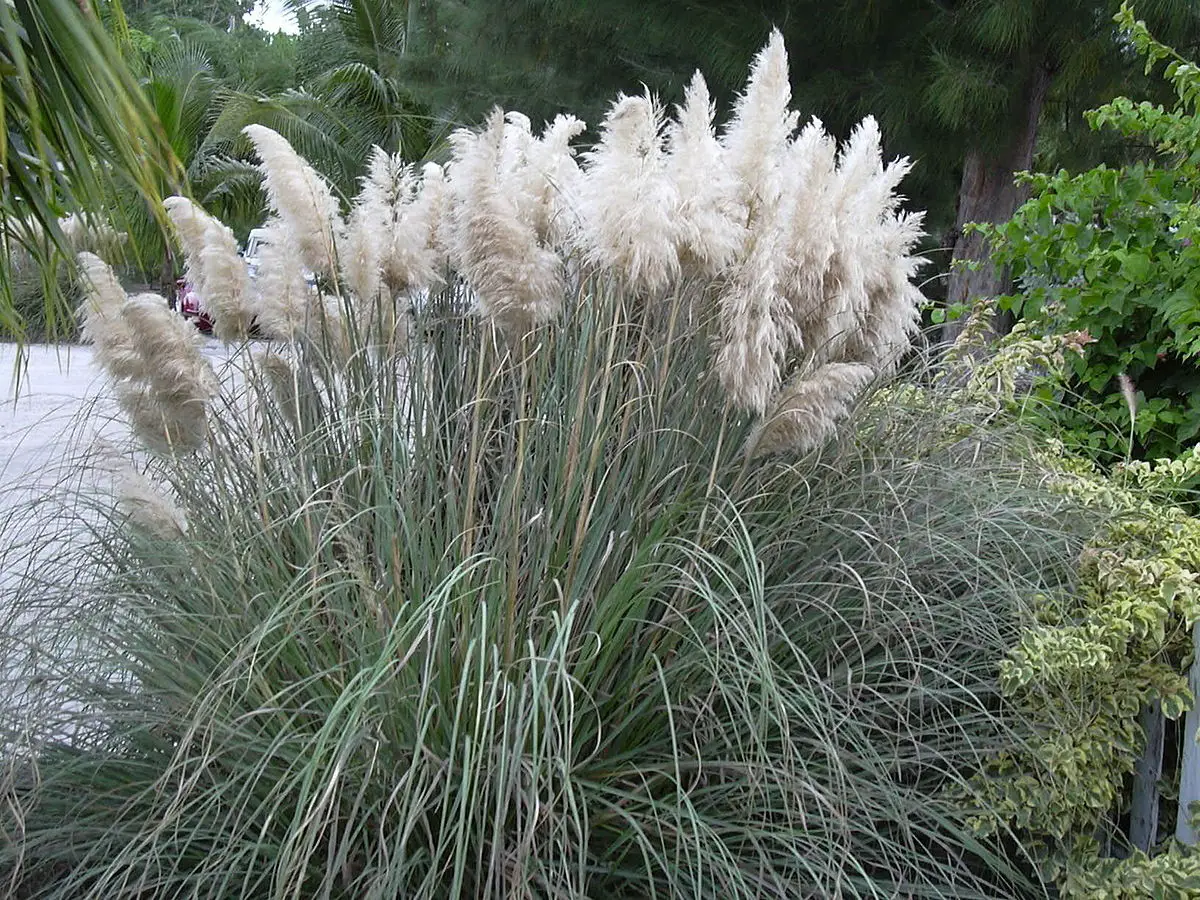

In many gardens and parks in the warm or subtropical areas of the world, it is common to find very tall grass, with what looks like feather dusters at the top of each stem. The Cortaderia Selloana It is a very easy plant to grow, in fact, it spreads so easily and quickly that it can become very invasive. It is important to control its growth so that you can enjoy its ornamental beauty without problems.
At next we will tell you everything about her.
From


The Cortaderia Selloana has its origin in South America, specifically in Argentina, Brazil and Uruguay. It lives in areas where rainfall is not very abundant, adapting to the drought of the place.
Features Cortaderia Selloana
This plant has the characteristic of having a wide territory that ranges from southern Brazil to northern Patagonia. So you can tell that there are a great number of them, due to the climate and the conditions of the terrain.
Its growth occurs in places and / or soils with sandy characteristics, soils with a high level of humidity and flooded soils, although also they can grow in humid areas without any problem.
The truth is that when this plant reaches its final growth phase, it tends to reach a maximum height of just over three meters. Despite its simplistic and inconspicuous design for many, it is ornamental plant used in various parts of the world.
The plant at its end has a series of seeds, which They are used for feeding birds and later the cultivation of the plant. As for its leaves, they can measure up to 1.5 meters long and tend to have an elongated shape and their texture is quite hard.
On the other hand, its leaves, despite being that large, have a very small width, around 1 cm wide. Something curious about its leaves is that has sharp marginsThis is the reason why the plant is so named, due to the large amount of hard hairs that tend to be sharp if touched by hand or something soft.
As for your flowers, you are they tend to bloom in summer and can be up to 70 cm long. It should be noted that there are female and other male flowers. To be able to differentiate one from the other, it is enough to know their width. To be more exact, female flowers are much thicker than male ones, and the latter tend to be hairier.
The wonderful thing about this species is that has different varietiesso your flowers will be a little different in color. The color palette of its flowers is between white and strong pink.
Farming
As you well know, this plant is massively cultivated in Europe and New Zealand for ornamental purposes, but its seed is also used to feed birds. On the other hand, it is not necessary to have a large land to grow or have this plant, much less have a large space due to its height that exceeds 3 meters.
Perfectly it can be had in small gardens if it is given proper maintenance from time to time. It can be as tall as it can be seen in its natural habitat, or as small as a pumila.
The plant is quite light, but because the plant is invasive, it is strictly prohibited in Spainto the point of sanctioning any person who comes to plant it, cultivate it and distribute it.
Regarding its roots, these tend to be standardso it does not need special care. This particularity gives it the ability to adapt to a large number of environments, although there are other plants with higher requirements in the surroundings.
Care


Its great ability to adapt to different types of soil makes it an easy species to plant and cultivate. EThis in principle is also due to the large amount of seeds it has the plant throughout its life.
About a million seeds and for each time it blooms, it has enough to spread and multiply excessively fast. In the event that it is intended to have this plant in cold places, You should know that it can withstand a minimum temperature of -18 ° C.
In the case of dry places, pampas gras can also adapt to soils that are dry and arid. Especially those lands that lack the ability to hold enough wateras to allow various species of plants to grow.
Pests
As such, it is a species that resists a great variety of terrains and environments. The only thing you need to be “well” is to prune it once a year and depending on where you have it much more frequently.
This being the only care that the plant needs, otherwise it is quite strong and resistant against multiple pests that can affect plants. So you shouldn’t worry if you have any.
Diseases
The same goes for pests, this is a very resistant plant against diseases. Sure this it does not eliminate the possibility that the plant could get sick at some point.
But if you compare to that of Cotaderia Selloana with other plants that you have in your garden and that if they are being affected by any disease, this will be healthy for a long timeunless it is surrounded by vegetation in poor condition. There the disease will pass to the plant after a while.
Uses


This is a plant used mainly in the ornamental field, although there are also places where they are used for flower arrangements. The rest have no other use besides the one already mentioned, although cellulose can be extracted from their leaves.
At first glance, you may not like this species at all because of its rustic and basic appearance, but if you know how to use it correctly, you can offer a better look to any garden or orchard you have. Keep in mind that the plant tends to be very invasive and its growth process is quite high.

